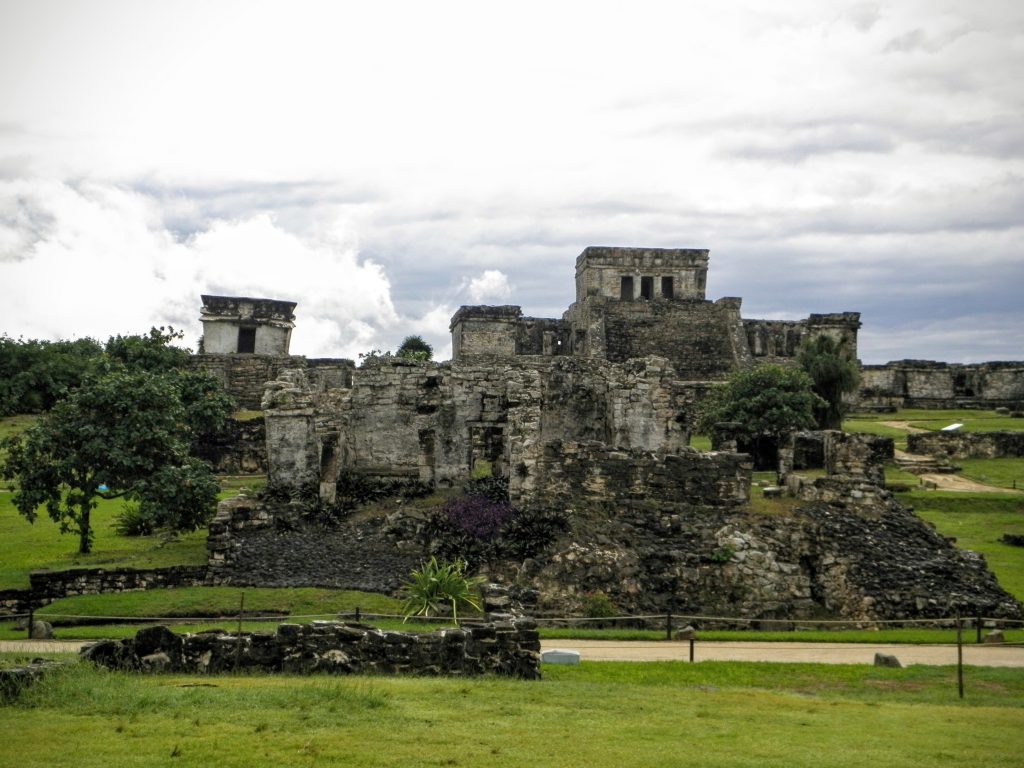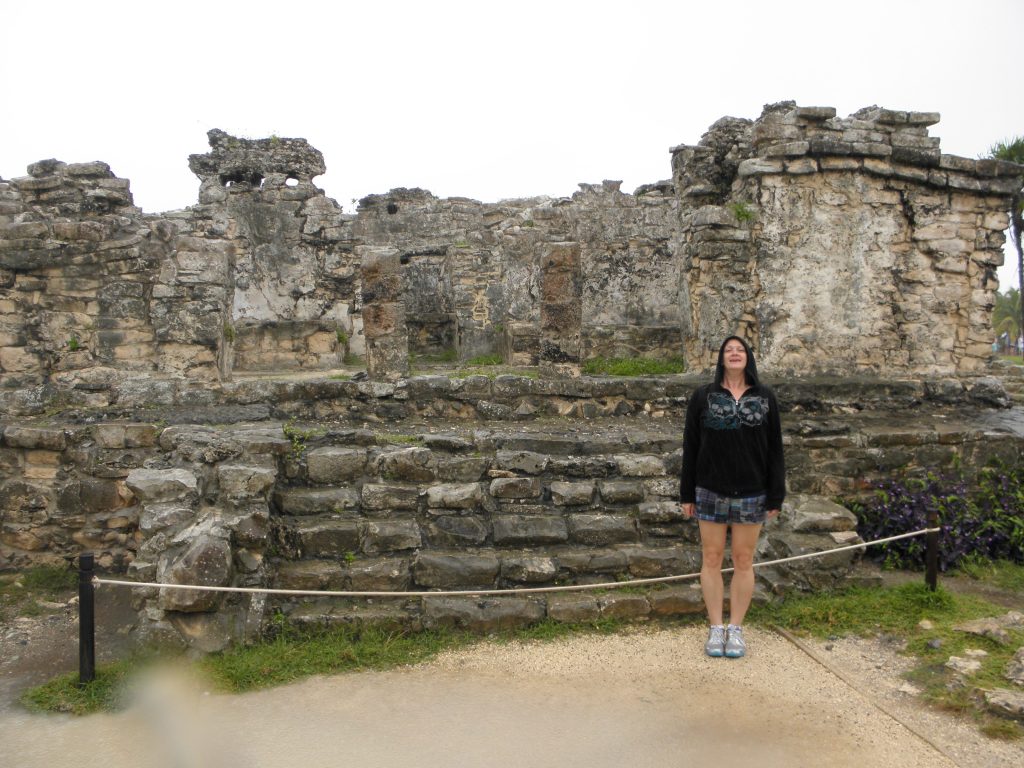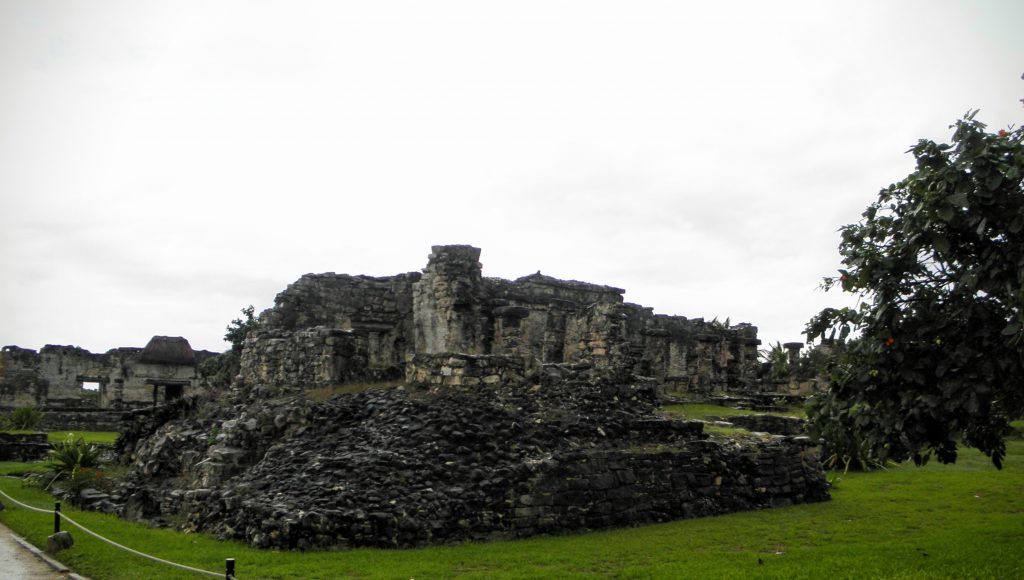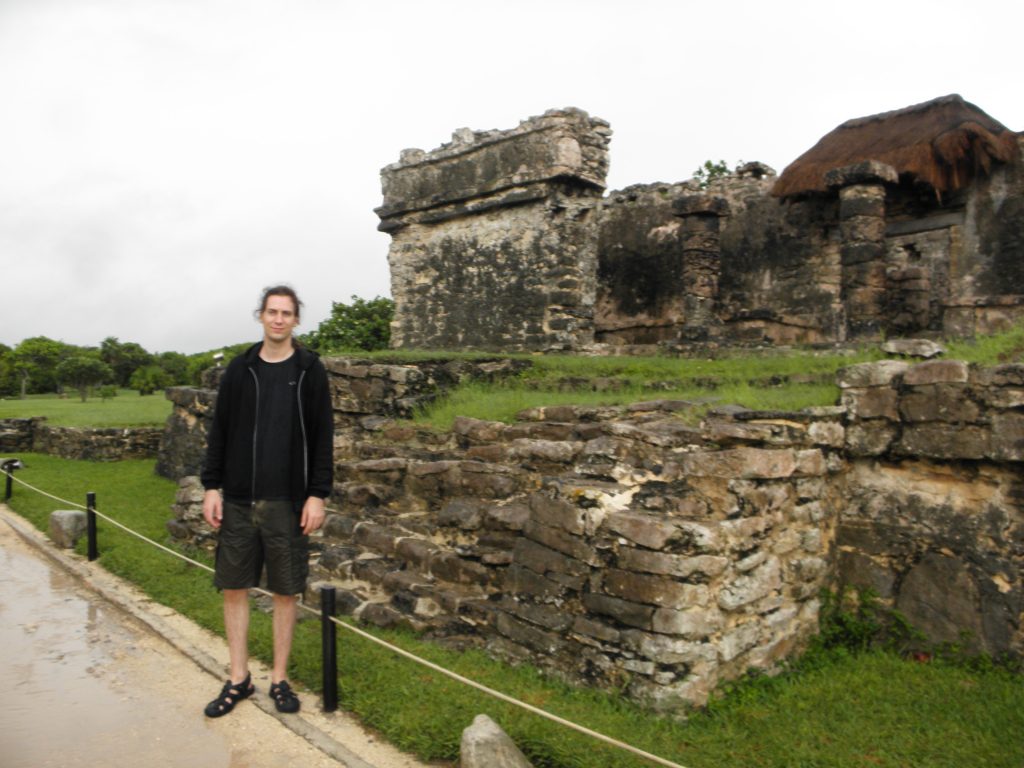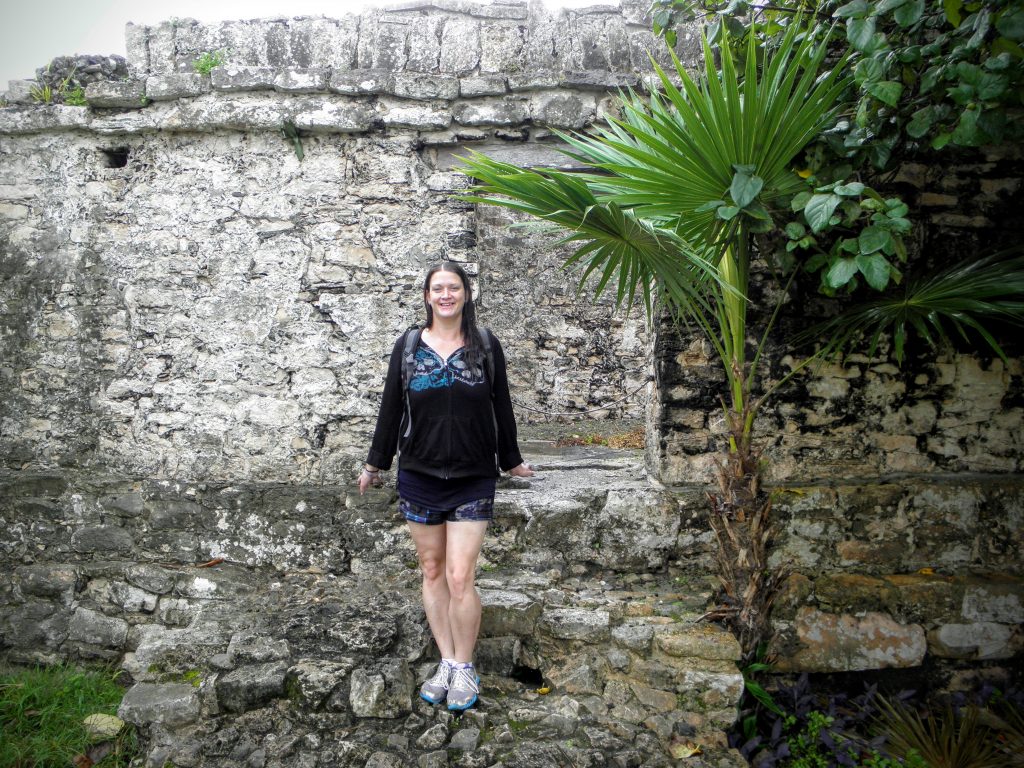Tulum National Park, Mexico
I am always learning about places I have been. After researching and sharing some information about Norwegian Fortresses, I became extremely curious about another fortress type place I had been back in 2012. The Tulum Ruins in Mexico.
Nathan and I rented a car at the resort where we were staying, and made our way down to Tulum National Park, driving along the Mexican Federal Highway 307. Something we saw as we were driving that I will never forget… federal police were stationed along the highway, casually holding machine guns. Slightly terrifying, but apparently commonplace.
We arrived a little before 10:30 am, hoping to avoid crowds. Although it was October, the weather was warm and pleasant. One of the greatest things happened when we arrived. As we were purchasing our tickets to enter the park, it started to rain! Now, when I say rain… I mean it was a tropical rain. Fierce, warm, and wet. We were soaked all the way through our clothes in a matter of minutes. I love the rain, but I love it even more when it prevents other tourists from being where I am! It is said that Tulum is the third most visited archaeological site in all of Mexico, with thousands of people visiting the ruins every day. As we ran around the park, it was mostly empty and I loved it!
Between the weather and the visible passage of time, I felt invigorated. I was full of barely containable energy! I remember being truly happy. At the time, the ruins were the oldest man-made structures I had ever seen.
Interestingly enough, many of the structures at Tulum were built at a similar time as Bergenhus and Akershus in Norway. Yet these buildings along the Caribbean seashore are much different than the fortresses in Norway. The ultimate difference is that neolithic construction existed in the Americas until Europeans arrived.
Nathan and I spent a little over two hours exploring the entire archaeological site, although we never went down to the beach. And as always, I feel like I didn’t take enough pictures.
As I prepared to write about the Tulum Ruins, I took my time rediscovering each structure I did have pictures of. Not only did I want to know everything about each building, I wanted to make sure each photo I had was labeled correctly. While researching, I found many photos on the internet to be mislabeled.
Another problem I ran into while researching the ruins were maps. Although the maps all seem the same, they are not. Some maps label most of the structures, some label only a few structures, and the names of structures are not always consistent from one park map to another. I have a picture I took of the map at the park, but even the one I have seems vague to me. After many hours of reading and comparing information I had found, I do believe I was able to find the names of all the structures I have pictures of.
It seems to me that a lot of speculation has occurred over the years about Tulum. I honestly don’t think humans will ever really know the truth about how these structures were used in this city by the sea. Especially since the city was completely abandoned after the majority of the native peoples died from Europeans introducing “old world” diseases.
It also appears that the main focus, when anyone shares information about the buildings at Tulum, is El Castillo, Templo del Dios Descendente, and Templo de los Frescos leaving very little information about the remaining structures to be found. I’ll do my best not to lead anyone astray.
A few facts about the Tulum Ruins
- Tulum was one of the last cities built and inhabited by the Maya; it was at its height between the 13th and 15th centuries and managed to survive about 70 years after the Spanish began occupying Mexico.
- Tulum stands on a bluff facing east toward the Caribbean Sea.
- Before Europeans arrival to Mesoamerica, Tulum was known as Zama (City of Dawn).
- Tulúm is the Yucatan Mayan word for fence, wall, or trench.
Mayan Ruins on the Caribbean Sea
Tulum Ruin National Park
Casa del Noroeste (House of the Northwest)
Sometimes referred to as Structure 34, there is relatively no information available about this building. It is the first ruin you see when entering through the northwest gateway.
El Palacio (The Palace) or House of Halach Uinic
This is one of the buildings which served as a residence to the most important inhabitants of Tulum. It is formed by various large rooms which were covered with roofs supported by columns and beams. There are benches around the walls, which were used as seats and probably beds. At the back of the building there is a sanctuary where the family held their religious ceremonies.
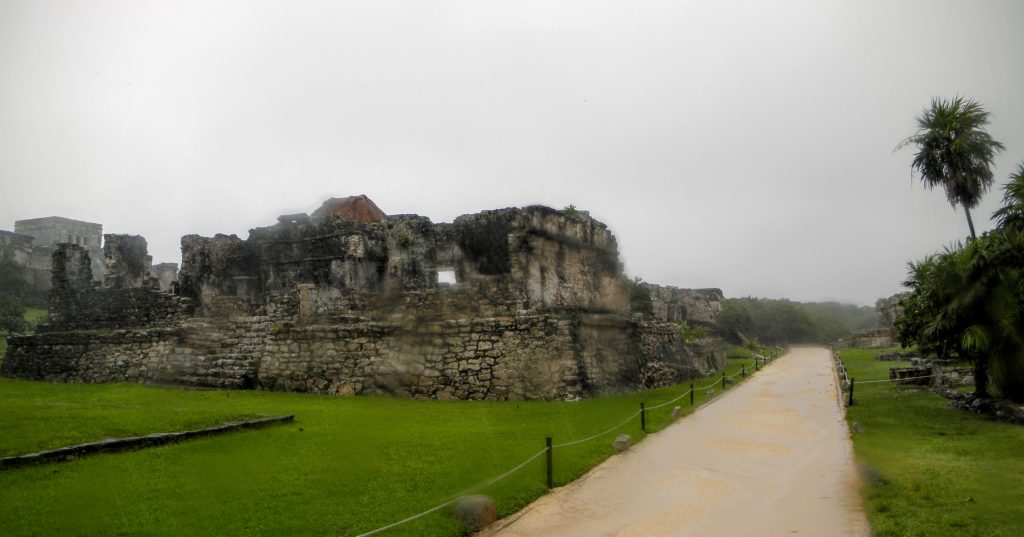
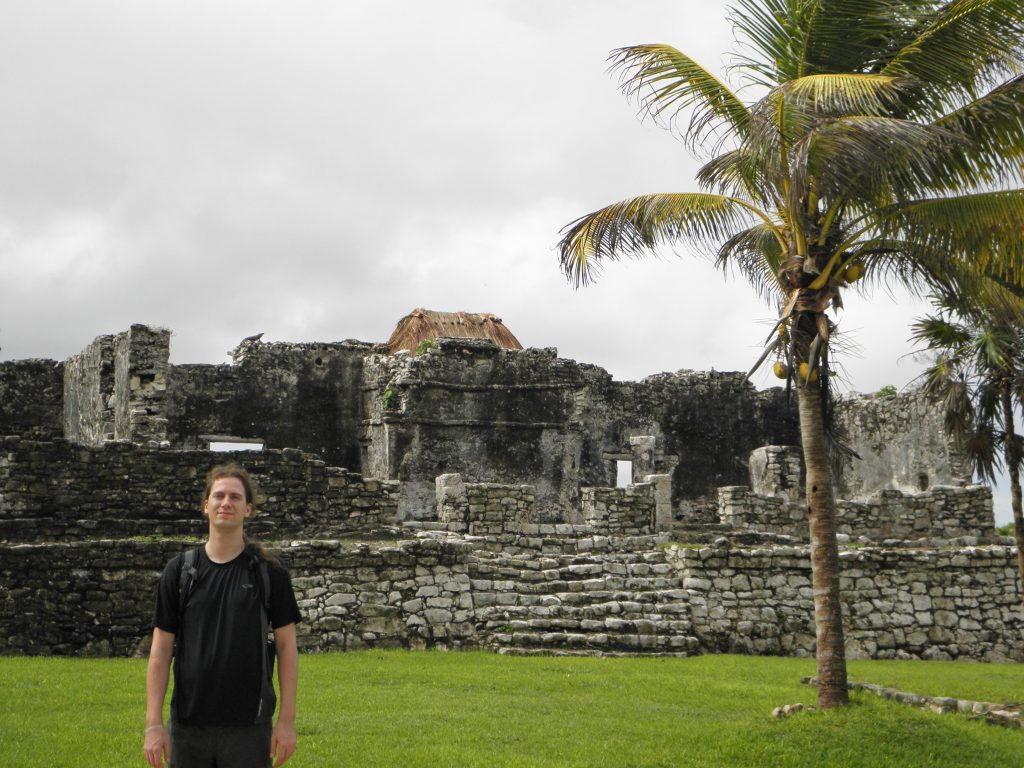
Casa de las Columnas (House of the Columns) or The Great Palace
I found most information about this structure to be speculation, and at times confused and combined with information regarding El Palacio.
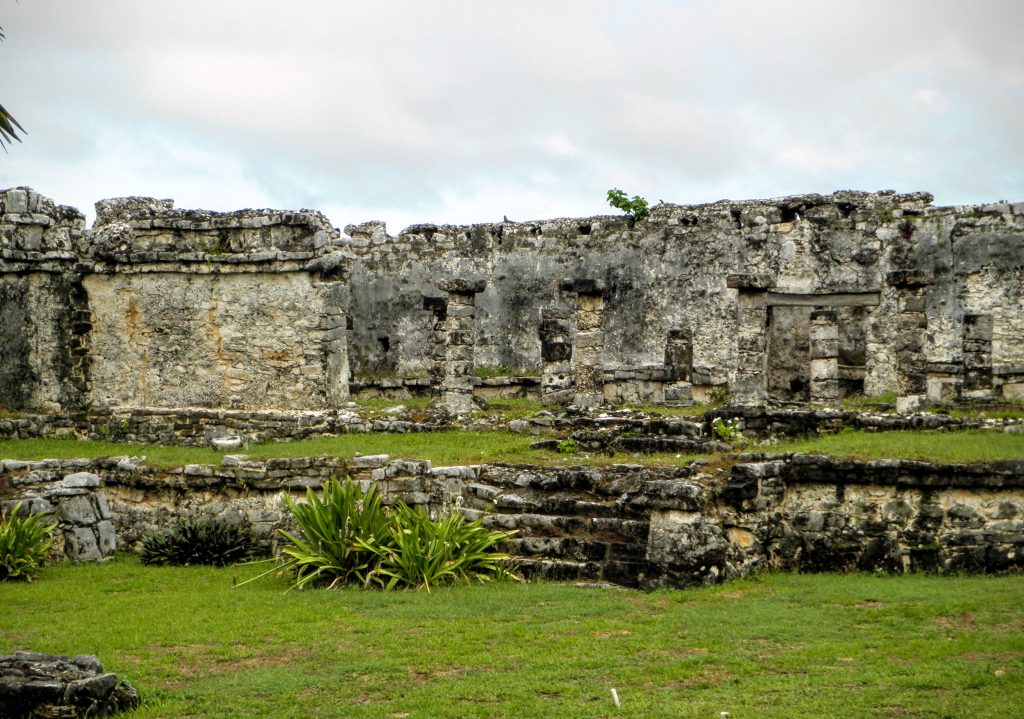
On top, in the center , an iguana is enjoying the sun.
Templo del Dios Viento (Temple of the Wind God)
This is another building surrounded by a lot of speculation. This structure is different than the rest at Tulum because it was built on a round platform. Many little platforms are all around the temple and are most commonly referred to as altars.
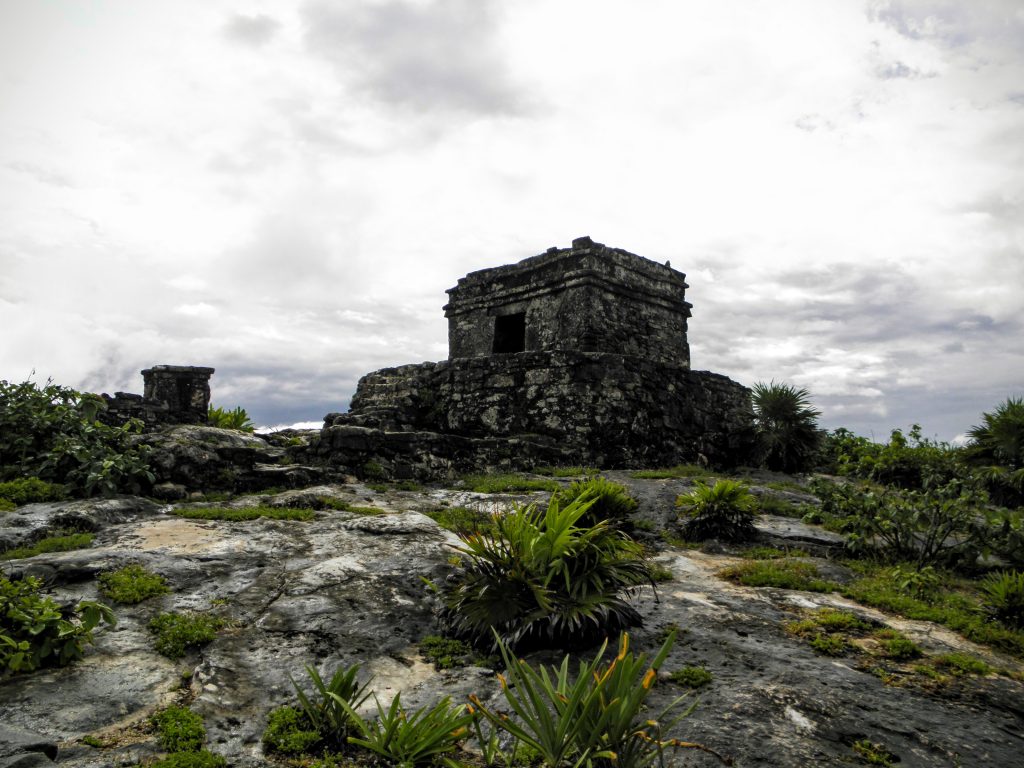
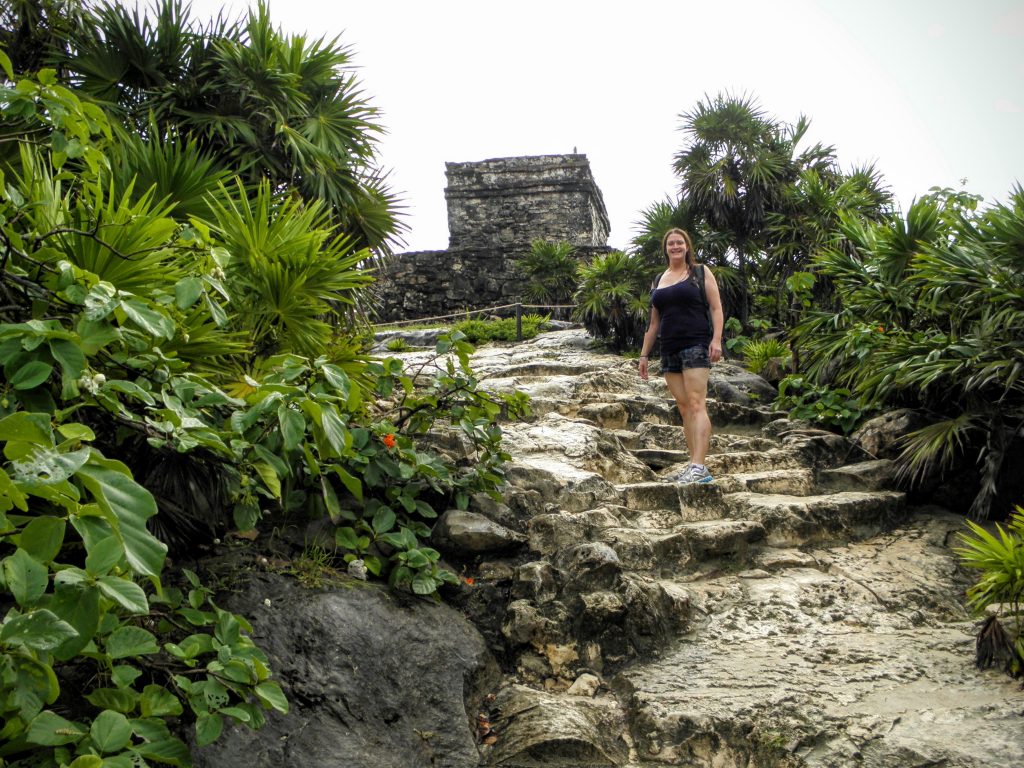
Templo del Dios Descendente (Temple of the Descending God)
Without a doubt one of the most beautiful in Tulum. Its name come from the niche located at the top of the door where a sculpture of a winged figure falling from heaven stands out. Its legs are up, its arms down; it is wearing a headdress and holding an object in its hands.
Although today it is a wonderful building, over 500 years ago it was even more beautiful as the temple was decorated inside and out with several representations of gods on mural paintings.
The walls and the door are not completely vertical, they are tilted; this is not the result of the passage of time but how it was originally built.
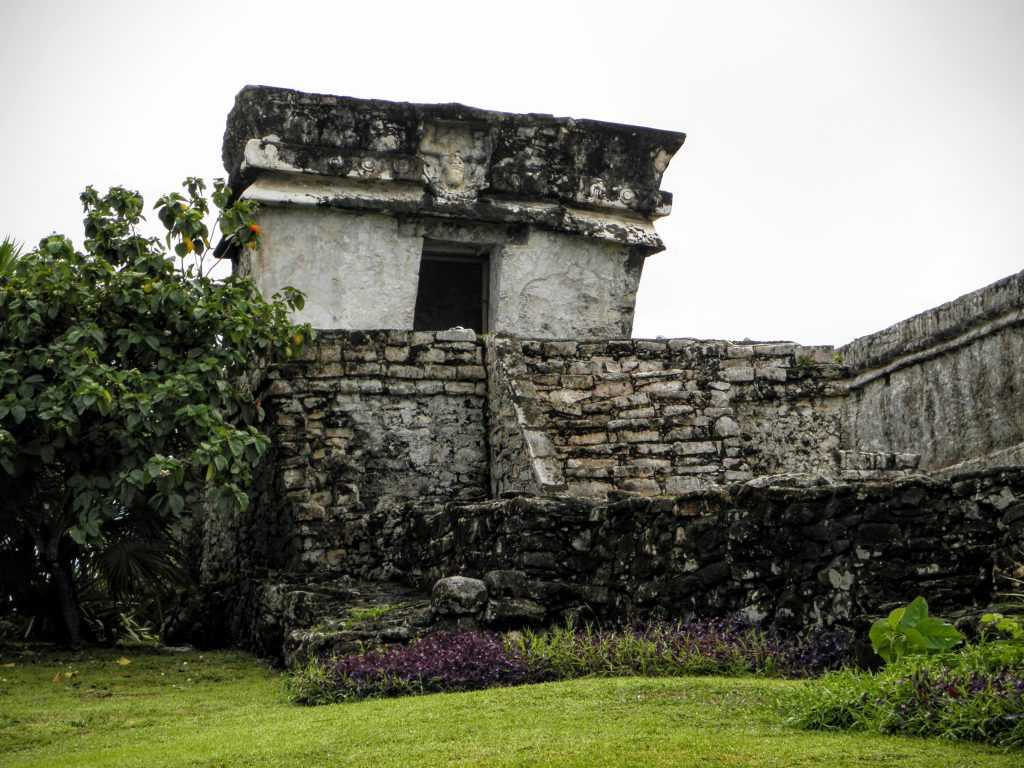
This is one of my very favorite photos!
El Castillo (The Castle)
This is the most imposing building of Tulum and, without a doubt, was also the most important. The temple has two small rooms in the upper part in which the principal religious ceremonies were held. The façade was decorated with sculptures and its corners still conserve the remains of masks. The upper temple and the stairway were built on top of a lower, earlier building, which one can see from either side of the stairway. At ground level on both sides of the stairway, there are two other small temples in which offerings were deposited on their respective interior altars.
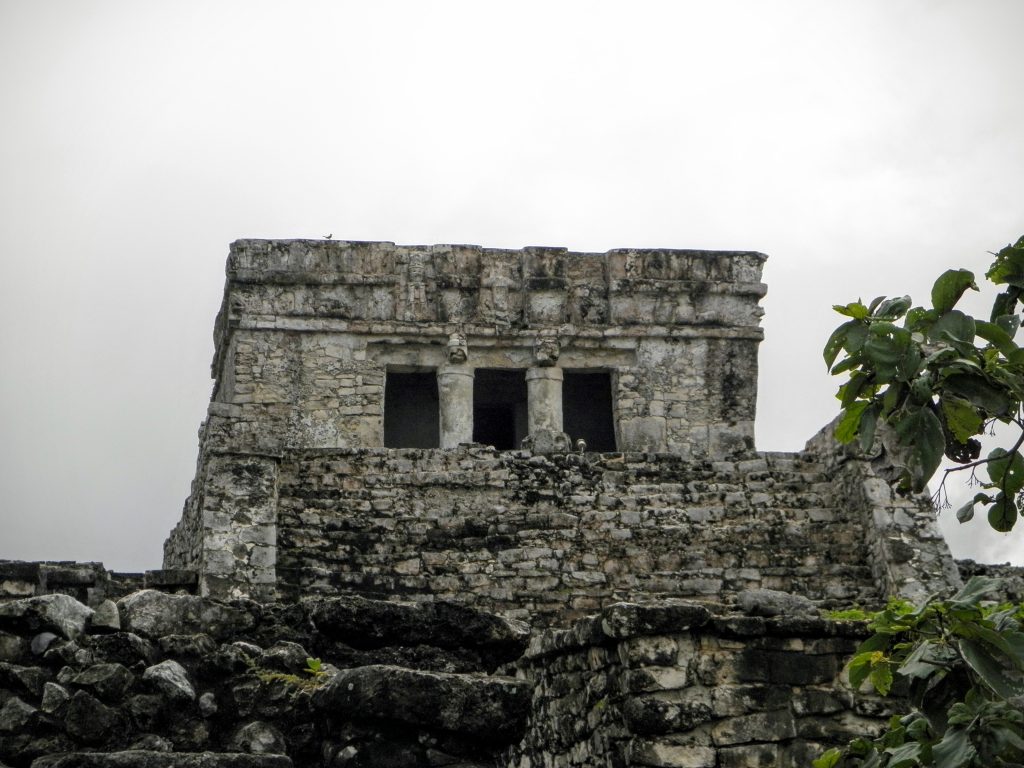
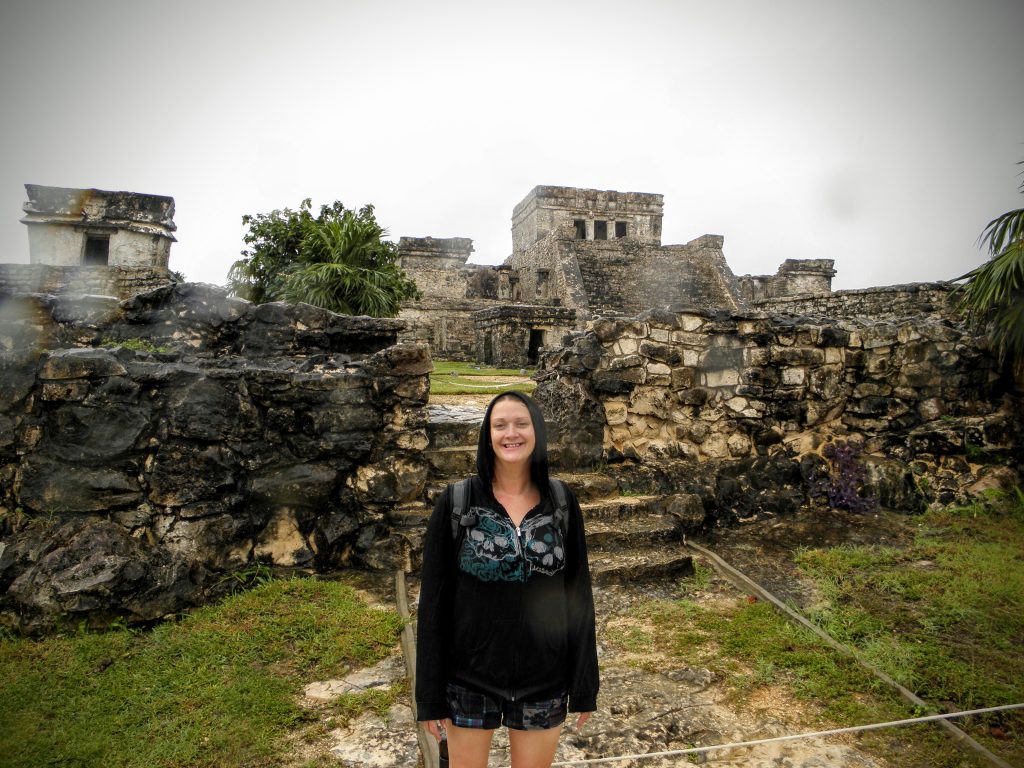
Templo de la Estela (Temple of the Initial Series)
When first discovered, archaeologists found fragments of the stela (a stone monument now located in the British Museum) inside Templo de la Estela (Temple of the Initial Series) along with representations of people and some hieroglyphs. The stela was inscribed with the Mayan date corresponding to 564 A.D. This confused archaeologists who thought that Tulum had been built hundred of years later than this. It is now believed that the stela was brought to Tulum from Tankah, a settlement about 4 km (3 miles) to the north.
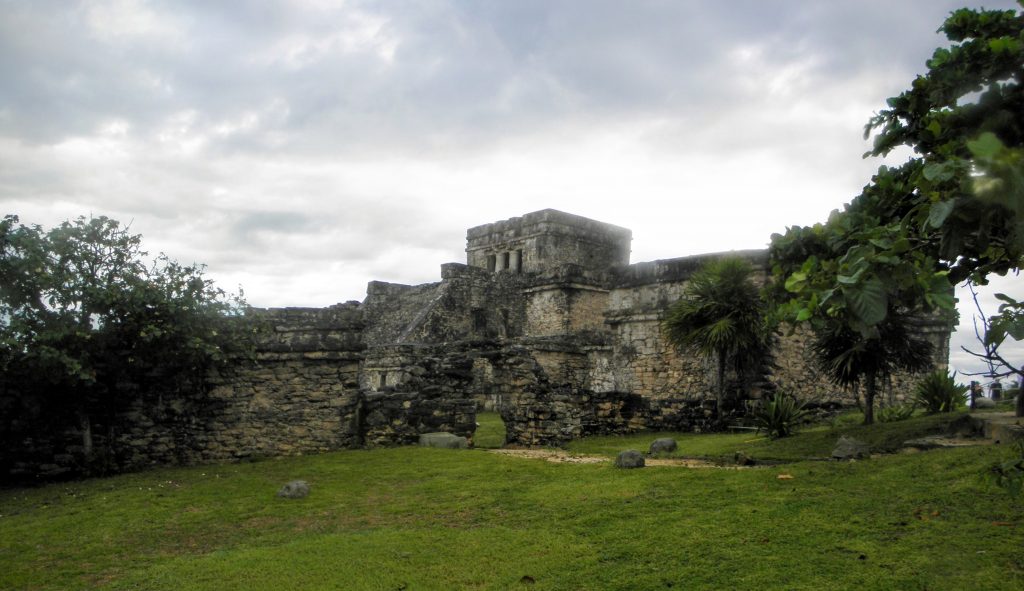
Templo de los Frescos (Temple of the Frescoes)
This building conserves most of the decorative elements of Tulum. It has two levels, of which the lower level is comprised of two temples, one within the other, where the decoration is concentrated. The façade of the inner temple is decorated with mural paintings, while that of the outer temple boasts stucco figures in bas-relief, including masks in the corners, sculptures in three niches in the façade – the central one is a representation of the descending god – and human figures intertwined in the frieze. The temple of the upper level is very simple as its decoration consists of red colored hand prints.
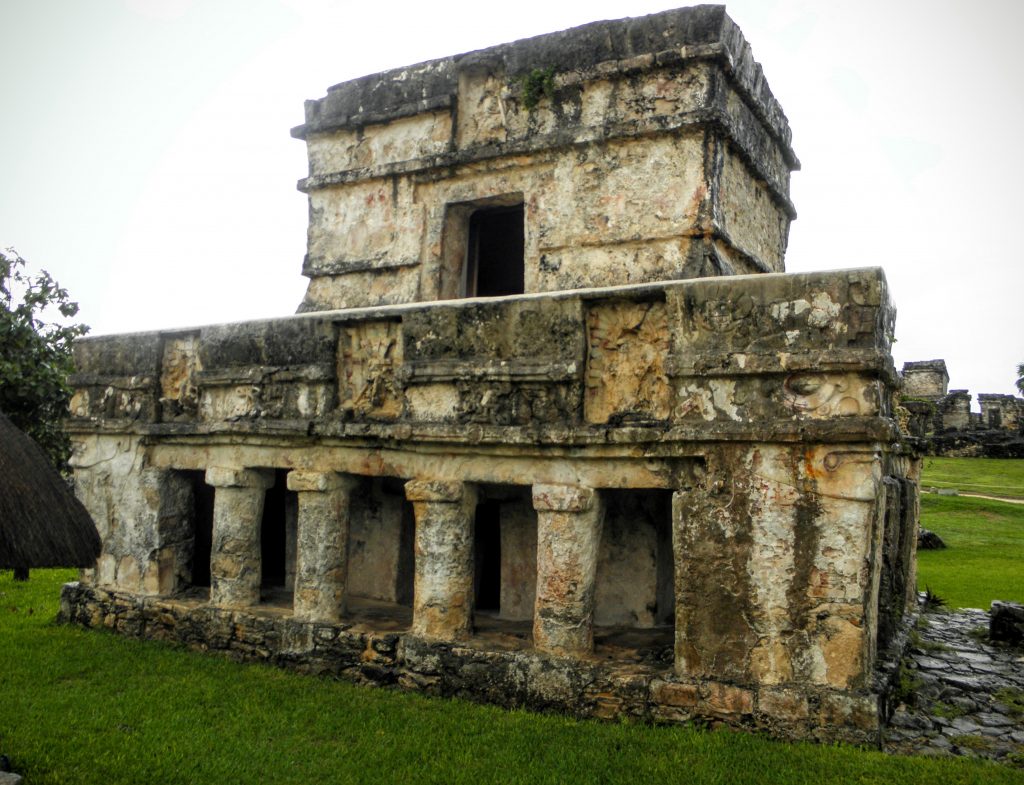
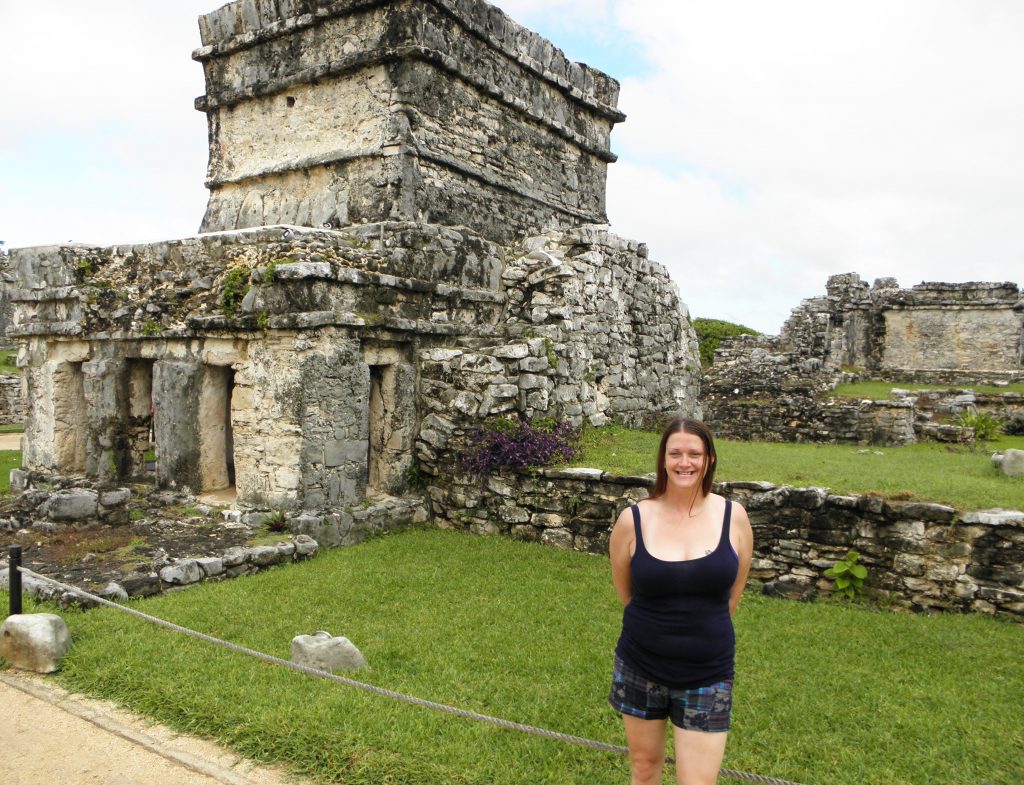
Farther behind on the right is the House of the Columns.
House of the Chultun
Often referred to as Structure 20, this building was most likely used to gather and store rainwater.
Casa del Cenote (House of the Well)
The name of this building is derived from the fact that it was built on top of a cave containing water. Originally it was just a rectangular building with two rooms, between which a tomb was found. Later, another room was added directly on the roof of the cave. As is typical of construction, there was a small sanctuary at the back where the occupants celebrated religious ceremonies.
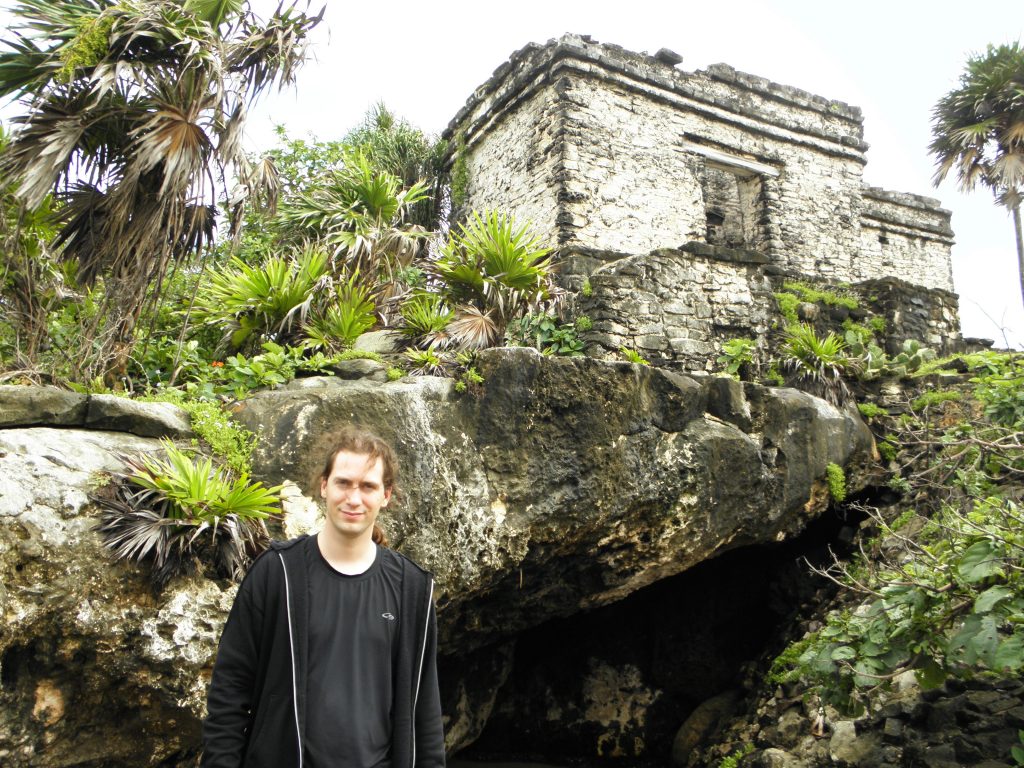
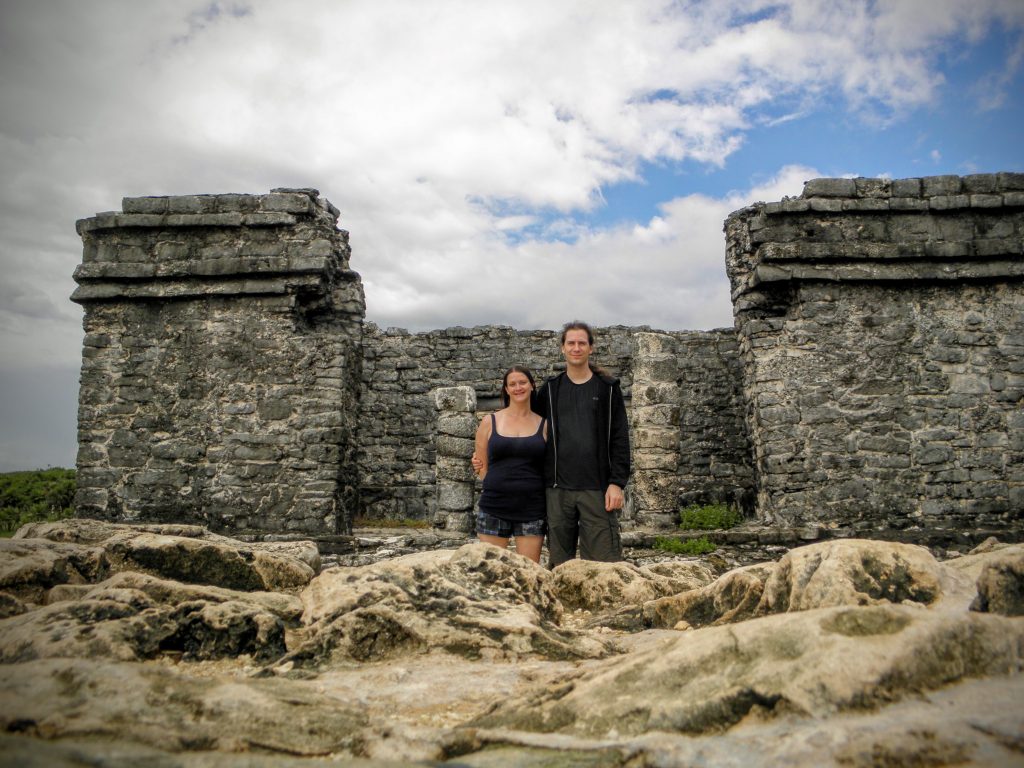
Templo del Mar (Temple of the Sea)
I searched for what seemed like forever to find a name for this structure. It is almost always referred to as Temple 54. It is off by itself on the cliffs to the southeast, past the stairs to get to the beach near El Castillo.
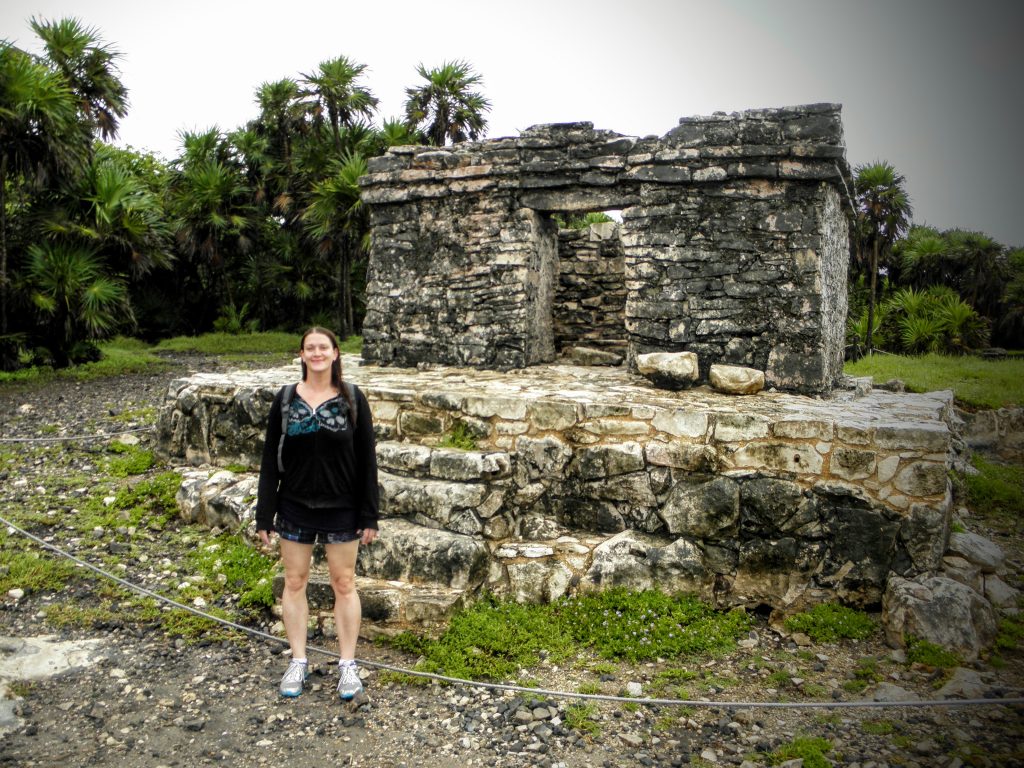
Muralla
Tulum is surrounded by a huge stone wall. Its height is irregular since it follows the contours of the land and it is rectangular shaped with only three sides; that which faces the sea was naturally protected. Without a doubt, the wall had a defensive purpose although it also served to establish the limits of the “sacred” area. It has five doorways or entrances: one facing west, two to the north and two more to the south.
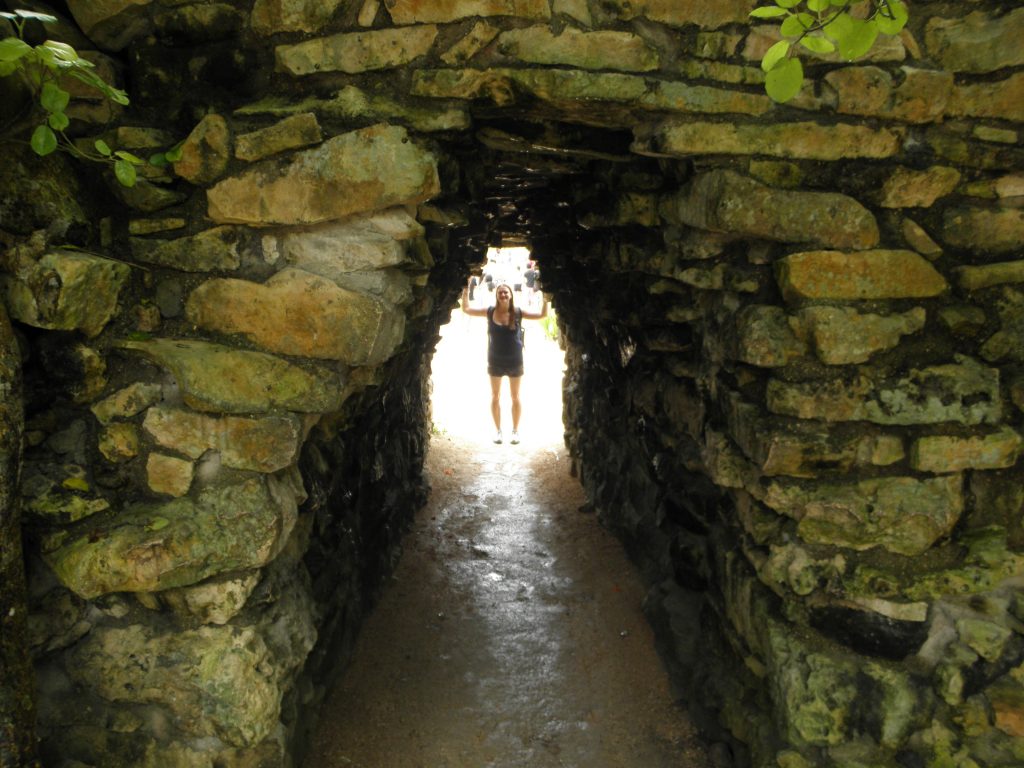
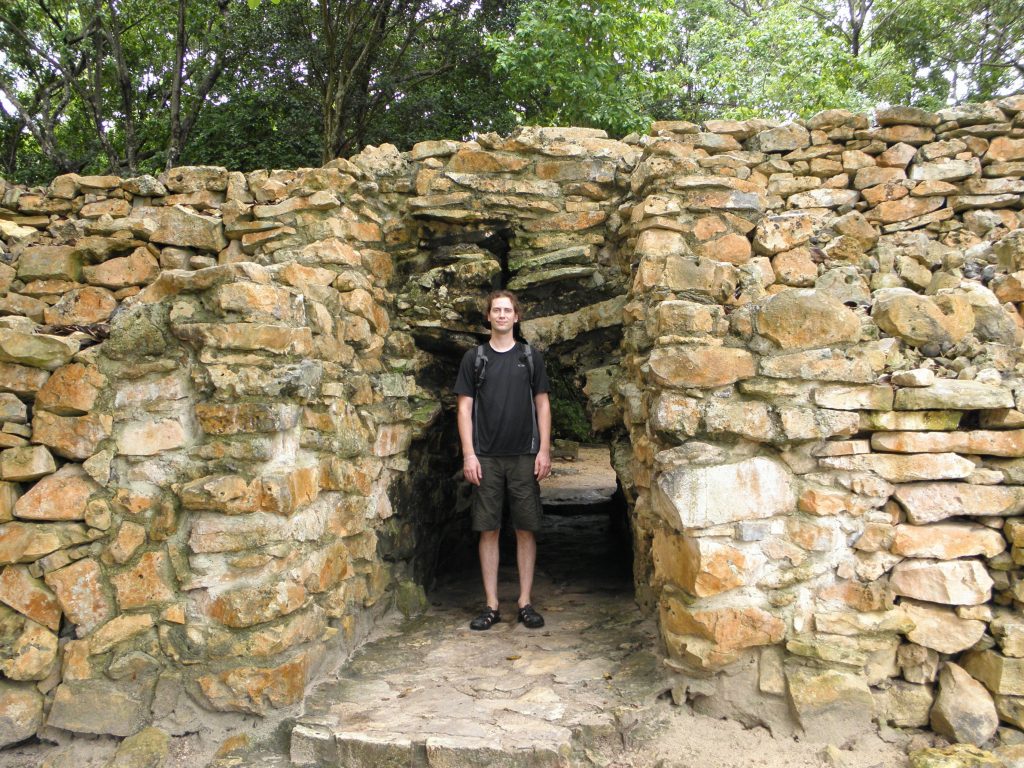
Torreón
On the corners of the wall, there are a pair of temples which are called “towers”, although it is unlikely that they played any defensive role. They have three doors and there is an altar against the back wall where offerings were deposited. Above the moldings of the façade there is a panel with geometric designs which were originally painted.
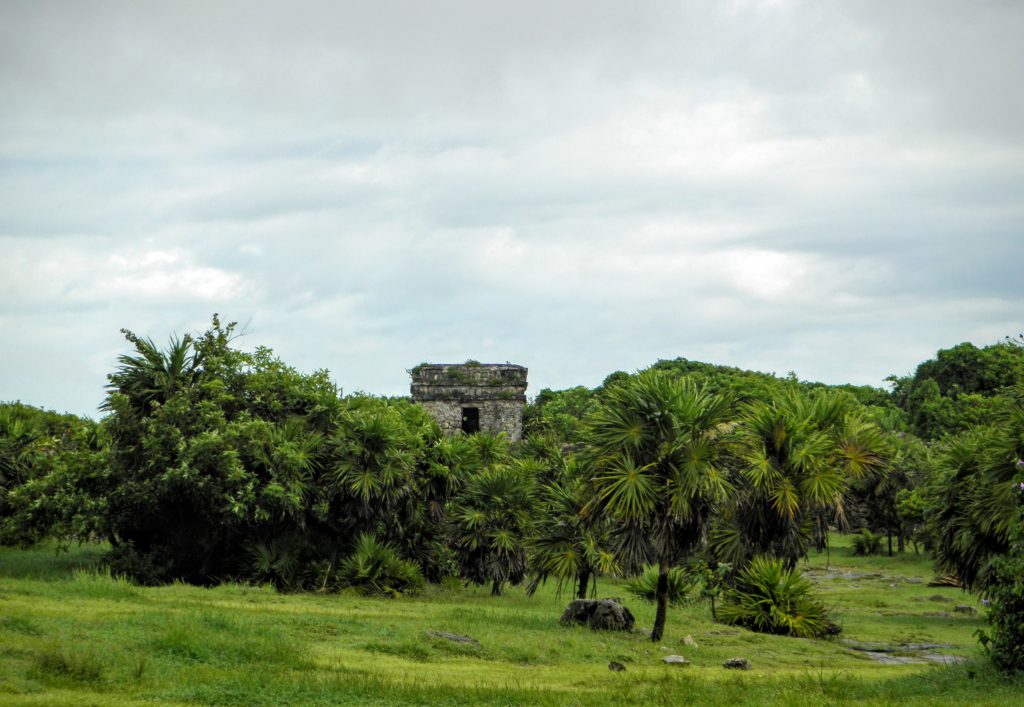
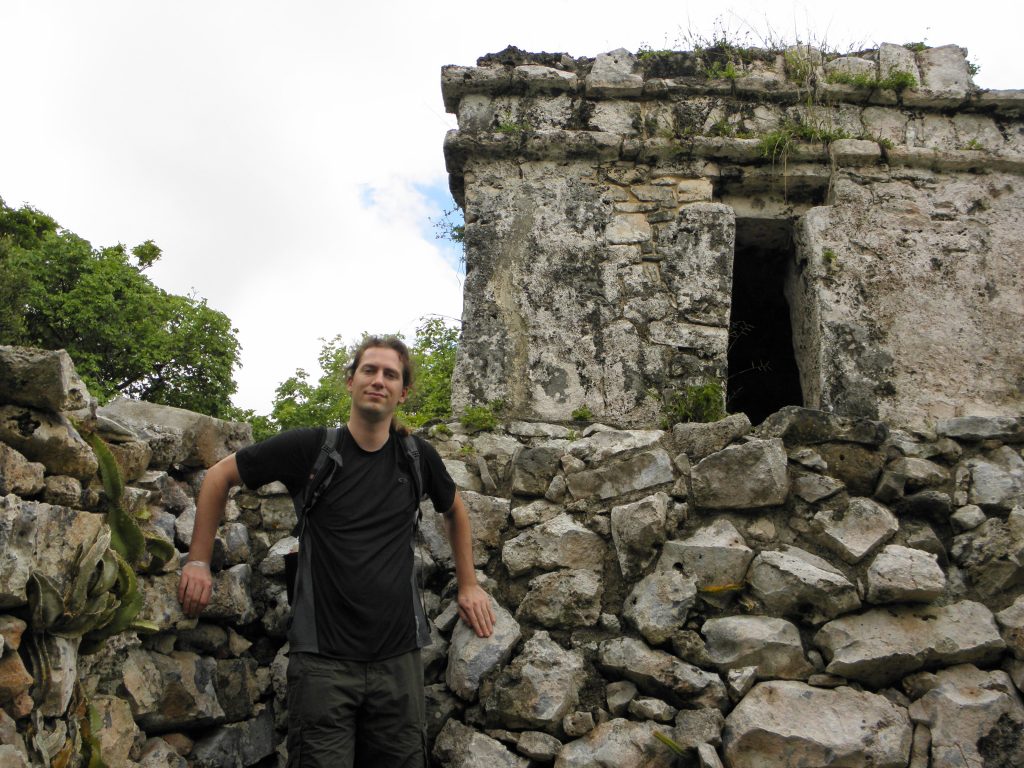
All information provided by INAH (Instituto Nacional de Antropología e Historia) on signs within the park, unless otherwise noted.
All photos were taken by me (Alicen) and Nathan
Tulum, Quintana Roo, Mexico – October 21, 2012
